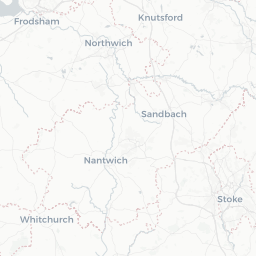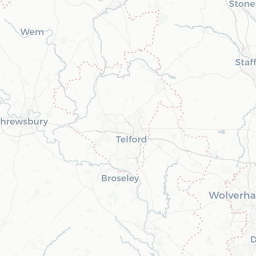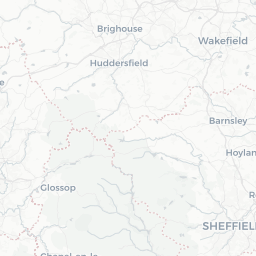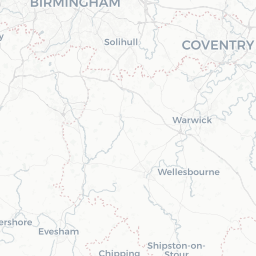PL4 (Plymouth)
Plymouth (PL4) Postcode Area
Plymouth, on the Devon coast, is a city known for its maritime history and stunning waterfront. Living here offers a blend of urban excitement and scenic beauty, with parks like Central Park and the iconic Hoe providing ample green space. Excellent transport links, including rail and ferry services, connect you to the wider region. Enjoy a diverse array of amenities, from independent shops to restaurants, and explore attractions like the National Marine Aquarium and historic Mayflower Steps. Ideal for families and young professionals alike!
Overview
Plymouth (PL4) postcode district is located in the ceremonial county of Cornwall, and is part of the Plymouth postal town.
The PL4 postcode area in Plymouth, Devon, is a vibrant and diverse community characterised by a strong sense of local identity. The average house price stands at £112,000, significantly lower than the UK average of £288,000. The population density is high at 20,900 people per sq km, and the average age of residents is 34, which is younger than the national average of 40.7 years. The area has a notable proportion of renters, with 50% of homes privately rented.
Settlements within PL4 include:
Compton, Laira, Mount Gould, Mutley
















People and Demographics
Demographics
The PL4 postcode is home to a diverse population, with a significant majority identifying as White at 87.1%. The area also has a notable presence of younger individuals, with 30.7% of residents being full-time students. The marital status breakdown shows that 65.2% of the population is single, which may reflect the youthful demographic and the presence of the nearby university.
Unemployment
Percentage of people in Plymouth PL4 who are classed as being unemployed at Census 2021.
An unemployment rate of 5% in Plymouth PL4 is slightly above the UK average of 4.3%, indicating a moderate level of joblessness.
While some residents may face employment challenges, the rate still suggests a functioning local economy. Efforts to boost job opportunities could further enhance community stability and support the area's long-term growth.
Diversity
Percentage of residents in the PL4 postcode region who identify as white.
With 87% of Plymouth PL4residents identifying as White, this postcode has a relatively homogenous population with some ethnic diversity.
While the majority share common backgrounds, the inclusion of different cultures brings varied experiences and enriches the community's social fabric.
Population Growth
Population growth means that the population of Plymouth PL4 is increasing by 2% each year.
Across the UK, (England, Scotland, Northern Ireland and Wales), the average population grown from 2023-2024 is 0.66%.
Children
Are under 18 years old
20% of Plymouth PL4 are under the age of 18 at the time of the Census 2021.
Plymouth PL4 aligns closely with the UK average of 17.4%. This indicates a balanced mix of families and other household types, with amenities catering to both children and adults.
Retired
Are enjoying retirement
15% of Plymouth PL4 are retired at the time of the Census 2021.
Plymouth PL4 aligns closely with the UK average of 16%, a mixed community of working-age individuals and retirees. Local amenities are likely to be diverse, and cater to both younger and older residents.
Census 2021 Demographics
Who lives and works in PL4?
Analysing the PL4 population's characteristics, including age distribution and cultural diversity, provides valuable insights into the composition of the community.
Population
Analysing the PL4 population's characteristics, including age distribution and cultural diversity provides valuable insights into the composition of a local community.
Demographics
The PL4 postcode is home to a diverse population, with a significant majority identifying as White at 87.1%. The area also has a notable presence of younger individuals, with 30.7% of residents being full-time students. The marital status breakdown shows that 65.2% of the population is single, which may reflect the youthful demographic and the presence of the nearby university.
Population Growth
Population growth means that the population of Plymouth PL4 is increasing by 2% each year.
Across the UK, (England, Scotland, Northern Ireland and Wales), the average population grown from 2023-2024 is 0.66%.
Children
of Plymouth PL4 are under the age of 18 at the time of the Census 2021.
Retired
of Plymouth PL4 are retired at the time of the Census 2021.
Gender Ratio
51% female
Gender ratio in census data means the number of males for every 100 females in a population, helping us understand the balance between men and women in a specific area.
Age Distribution
are adults
Age distribution refers to how different age groups are spread within a population, showing the number of people in each age range. This helps understand the population's structure and potential needs.
Age Distribution
"Age Distribution by 5-year bands" in the Census 2021 breaks down the population into groups based on age ranges, each spanning five years (e.g., 0-4, 5-9, 10-14, etc.). This helps to see how many people fall into each age group, providing a clear picture of the age structure in an area.
Living Arrangements
"Living Arrangements" in the Census 2021 refers to people's relationship status and how they live with others. It includes whether someone is married, in a civil partnership, cohabiting as a couple, separated, divorced, or single, and whether they live with a partner, alone, or with others.
Legal Partnership
Legal partnership status of residents in the Plymouth (PL4) district, offering insights into the diversity of relationship statuses in the area. This dataset classifies residents aged 16+ in England & Wales by their partnership status.
Gender Identity
"Gender Identity" in the Census 2021 refers to how people personally identify their gender, which may or may not align with the sex they were assigned at birth. It includes options like male, female, non-binary, or other identities, reflecting how individuals see themselves.
Postcodes
Dig even deeper into the PL4 postcode:
Click on an postal code below for more information about the area. Each postcode give you a comprehensive overview of the postcode neighbourhood, including address, demographics, crime, transport, amenities and house prices in Plymouth (PL4).
Word Cloud for PL4
We've trawled social media and the web to discover words that describe the postcode district of PL4:
Nearby Towns & Cities
PL4 Postcode area
The following towns and villages can be found close to Plymouth PL4:
Plymouth
Population 234,982
0.7 miles
Situated on the south coast of Devon, Plymouth's history extends to the Bronze Age, and was an important trading post for the Roman Empire. Today, it's still strongly influenced by shipbuilding and seafaring.
Nearest Postcode Areas:
Plymstock
Population 25,221
2.5 miles
Plymstock, located in Devon, offers a charming coastal community with picturesque views, friendly locals, and a variety of amenities, making it a wonderful place to call home for those seeking a relaxed seaside lifestyle in the picturesque South West of England.
Nearest Postcode Areas:
Torpoint
Population 7,717
2.6 miles
Located in Cornwall, Torpoint is a charming coastal town offering stunning views of the River Tamar, a strong sense of community, and easy access to the beautiful beaches of Whitsand Bay - perfect for those seeking a relaxed and picturesque lifestyle by the sea.
Nearest Postcode Areas:
Kingsand
Population 647
3.8 miles
Kingsand, located in Cornwall, boasts stunning sea views, quaint cottages, and a rich history dating back to the 17th century when it was a smuggling hotspot along the South West coast of England.
Nearest Postcode Areas:
Saltash
Population 15,566
3.9 miles
Saltash, located in Cornwall, is a charming town that offers stunning views of the Tamar River, a bustling town center with a variety of shops and restaurants, and easy access to both the countryside and the vibrant city of Plymouth just across the bridge.
Nearest Postcode Areas:
Heybrook Bay
Population 472
4.2 miles
Located in Devon, Heybrook Bay is a picturesque coastal village known for its stunning views of the English Channel and charming beachfront cottages, making it a perfect spot for those looking to escape the hustle and bustle of city life and enjoy a peaceful seaside retreat.
Nearest Postcode Areas:
Carkeel
Population 317
5.2 miles
Located in Cornwall, Carkeel boasts stunning views of the River Tamar and is well-known for its bustling farmers market which showcases the best local produce from the surrounding area.
Nearest Postcode Areas:
Cargreen
Population 224
5.4 miles
Cargreen, located in Cornwall, is a picturesque village along the River Tamar known for its tranquil waterside setting, historic cottages, and charming community feel perfect for those seeking a peaceful escape from the hustle and bustle of city life.
Nearest Postcode Areas:
Local Authorities
PL4 Postal Town
The PL4 postcode includes the following local authorities:
- Plymouth
Crime in PL4
How safe is this postcode sector?
In the PL1 postcode area, crime levels have been relatively stable in recent years, with a slight decrease in overall reported crimes. However, certain areas within the postcode continue to experience higher levels of criminal activity, making them key hotspots for local police.
Key Hotspots
One of the key hotspots in the PL1 area is the city centre, particularly around Union Street and the Barbican. These areas often see higher rates of anti-social behaviour, theft, and public order offences. Another hotspot is North Hill, known for its nightlife and student population, which can sometimes lead to alcohol-related incidents and disturbances.
Historical Crime Issues
Historically, the PL1 postcode area has faced challenges with drug-related crimes, particularly around Stonehouse and Devonport. These areas have been known for drug trafficking and substance abuse issues, which have posed a significant challenge for local law enforcement.
Current Policing Priorities
The police in the PL1 area have set priorities to address these key hotspots and historical crime issues. Their current focus is on increasing patrols in the city centre and North Hill areas to deter anti-social behaviour and theft. Additionally, they are working closely with community groups and support services to tackle drug-related crimes in Stonehouse and Devonport.
the police are committed to ensuring the safety and security of residents in the PL1 postcode area, and are continuously adapting their strategies to address evolving crime trends and challenges.
Sources: Police UK, Devon and Cornwall Police
Education
Highest Rated Schools in PL4
As rated by Ofsted
- Fletewood School at Derry Villas
88 North Road East, Plymouth, PL4 6AN
Good - Lipson Vale Primary School
Bernice Terrace, Plymouth, PL4 7HW
Good - Lipson Co-operative Academy
Bernice Terrace, Plymouth, PL4 7PG
Good - Mount Street Primary School
Mount Street, Plymouth, PL4 8NZ
Good - Salisbury Road Primary School
Salisbury Road, Plymouth, PL4 8QZ
Good - Holy Cross Catholic Primary School
2 Beaumont Road, Plymouth, PL4 9BE
Good

Unlock the full power of postcode insights.
Data is meaningless without context. Reveal the stories behind a neighbourhood, and make smarter decisions with data you can trust. Gain unlimited access to detailed statistics, exclusive reports, and essential tools.
PostcodeArea is grateful to our sponsors for their support.






